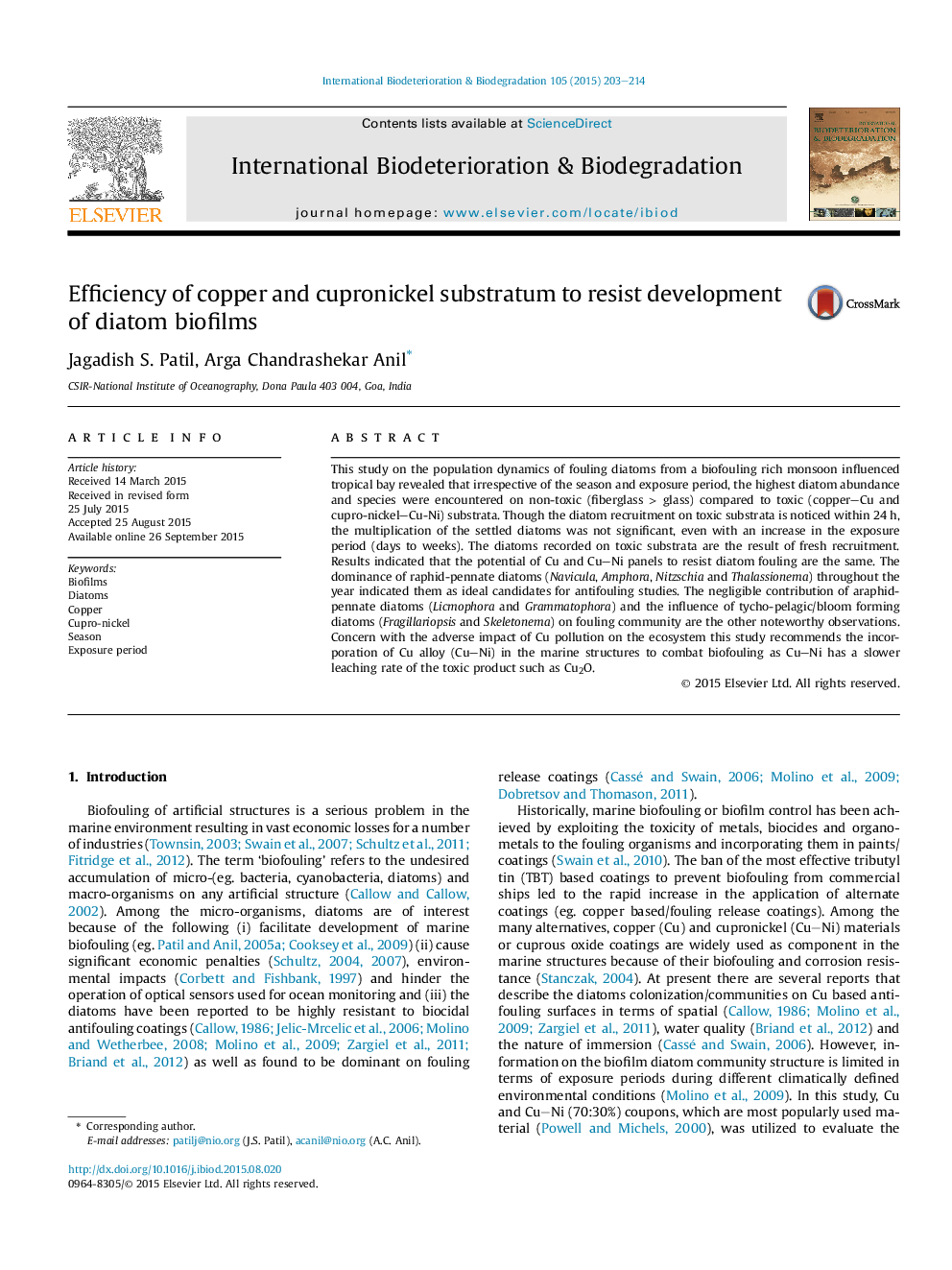| کد مقاله | کد نشریه | سال انتشار | مقاله انگلیسی | نسخه تمام متن |
|---|---|---|---|---|
| 4364329 | 1616312 | 2015 | 12 صفحه PDF | دانلود رایگان |
• Susceptibility of copper & cupronickel to diatom fouling in a tropical marine environment.
• Population of diatoms in the biofilm is a result of fresh recruitment rather than insitu multiplication.
• Diatom growth on copper and cupronickel surfaces significantly slower than nontoxic surfaces.
• The potential of copper & cupronickel surfaces to resist diatom fouling are similar.
• Raphid pennate diatoms are ideal test organisms for antifouling studies.
This study on the population dynamics of fouling diatoms from a biofouling rich monsoon influenced tropical bay revealed that irrespective of the season and exposure period, the highest diatom abundance and species were encountered on non-toxic (fiberglass > glass) compared to toxic (copper–Cu and cupro-nickel–Cu-Ni) substrata. Though the diatom recruitment on toxic substrata is noticed within 24 h, the multiplication of the settled diatoms was not significant, even with an increase in the exposure period (days to weeks). The diatoms recorded on toxic substrata are the result of fresh recruitment. Results indicated that the potential of Cu and Cu–Ni panels to resist diatom fouling are the same. The dominance of raphid-pennate diatoms (Navicula, Amphora, Nitzschia and Thalassionema) throughout the year indicated them as ideal candidates for antifouling studies. The negligible contribution of araphid-pennate diatoms (Licmophora and Grammatophora) and the influence of tycho-pelagic/bloom forming diatoms (Fragillariopsis and Skeletonema) on fouling community are the other noteworthy observations. Concern with the adverse impact of Cu pollution on the ecosystem this study recommends the incorporation of Cu alloy (Cu–Ni) in the marine structures to combat biofouling as Cu–Ni has a slower leaching rate of the toxic product such as Cu2O.
Journal: International Biodeterioration & Biodegradation - Volume 105, November 2015, Pages 203–214
